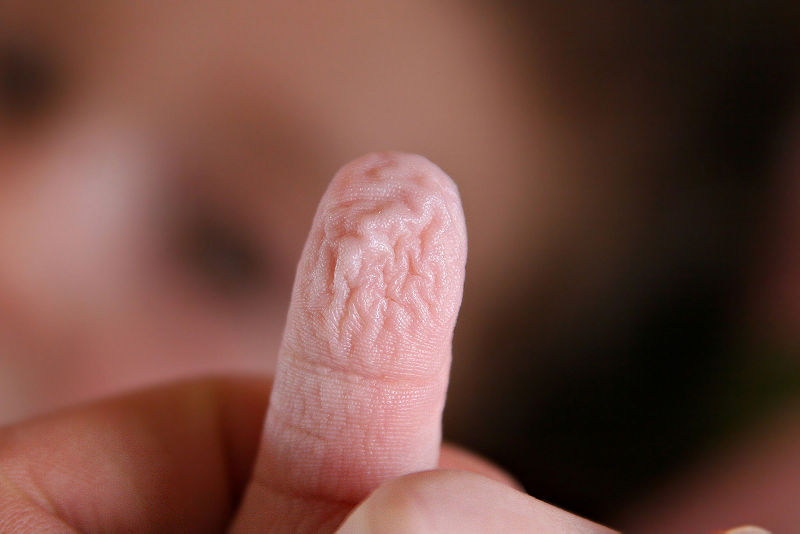
Two Australian researchers have stumbled upon a model that might explain why our skin becomes wrinkled in the tub.

We all know that when our skin starts looking like dried, shrivelled up prunes, it’s time to get out of the tub. But how many of us actually know why that happens?
Researchers Myfanwy Evans and Stephen Hyde, both of the Australian National University, believe they
may be on track to finding the answer after discovering a ‘stringy skin’ model while launching a mathematical study on naturally-occuring topological shapes.
Previously, it was known to scientists that the resilience and elasticity of the skin came from keratin, a close-knit network of fibrous proteins on the surface of the skin.
Exactly how the fibres were arranged to allow skin to absorb large quantities of water yet not lose its tenacity had so far remained a mystery.
Evans and Hyde’s new model may be the one to crack the code, explained in detail in the March 8 Journal of the Royal Society Interface.
“It explains a lot of mechanical features that hadn’t really been able to be explained before,” said Ms Evans.
Ms Evans had been studying the group of shapes, called Gyroids, which are present in nature. The most common example of where they can be found is within butterfly wings.
The pair used 3-D computer technology to simulate threading infinite lines through the maze-like structure of the Gyroid surface, then removing the surface entirely.
Some of the final models were so tightly interwoven that if a single thread moved, it would disrupt the links between other threads. If these models were used in keratin, this would mean that skin lost its resilience when damp.
“Losing contacts between keratin fibres means losing structural rigidity,” said Ms Evans.
However, other models could grow and not break the connection between threads, one of them being G129.
It could expand up to seven times in size, yet have all its thread connections intact, mimicking the natural properties of skin perfectly.
According to Ms Evans, early results obtained from using the model to study keratin structures within dry skin were almost indistinguishable from proven data.
“That was quite convincing evidence that it’s highly likely that this model really does work,” she said.


